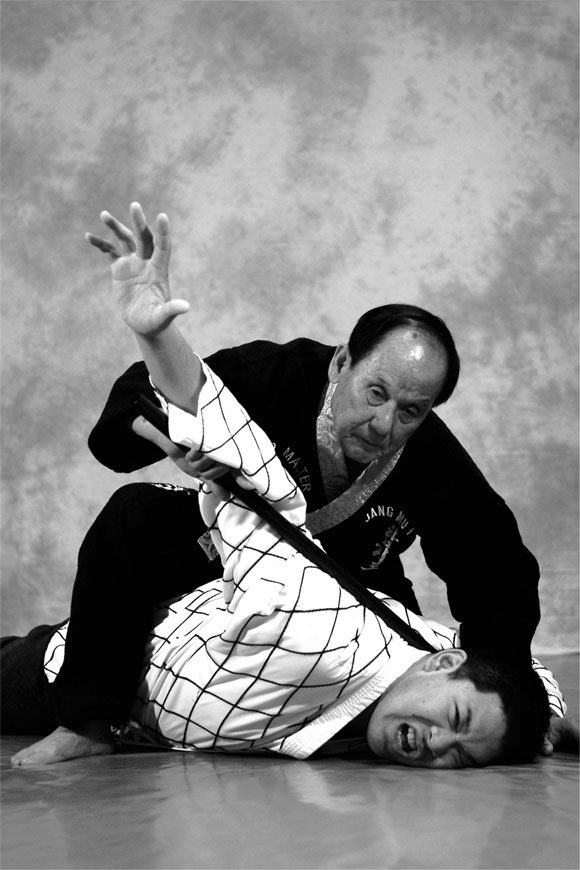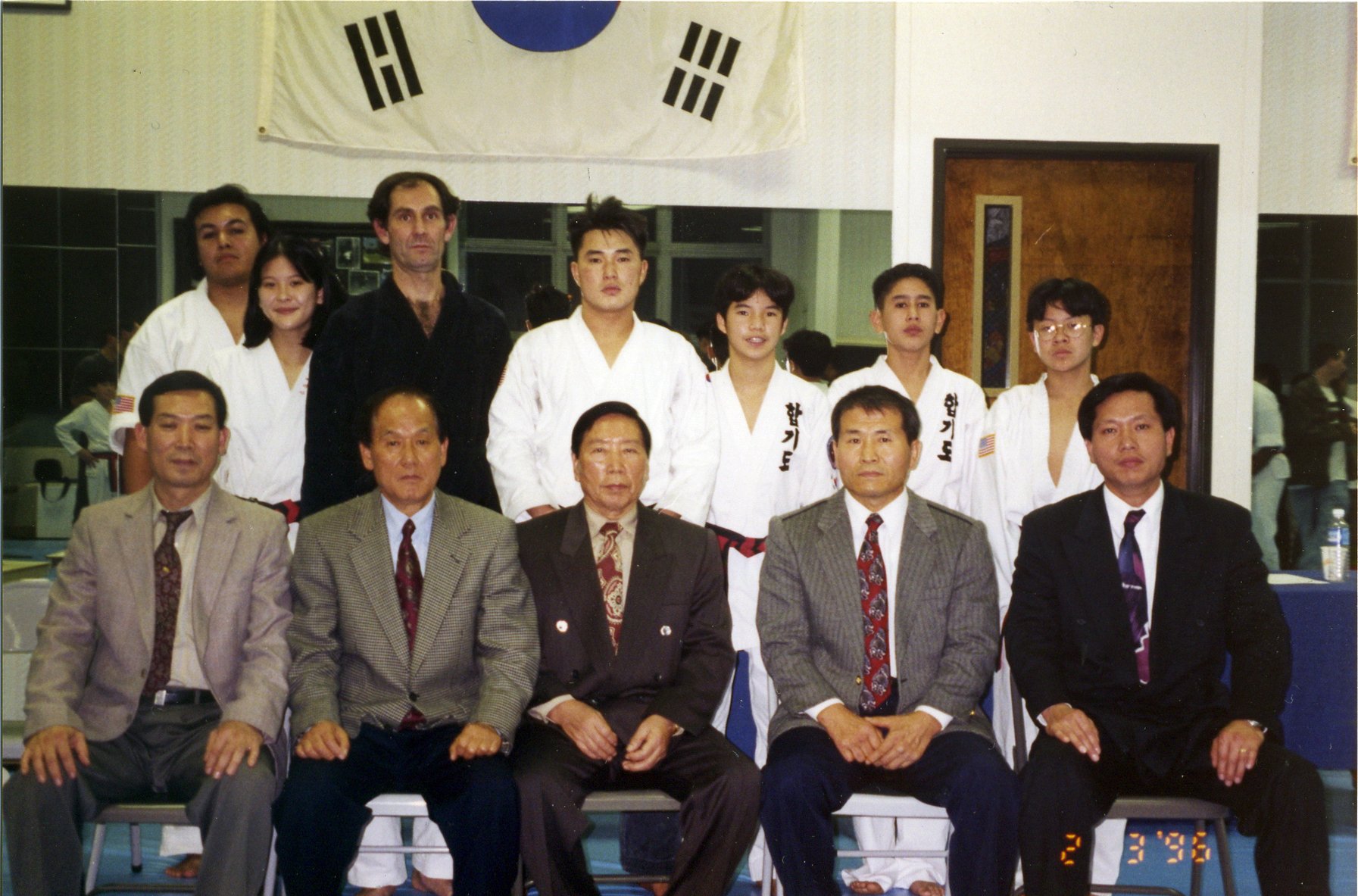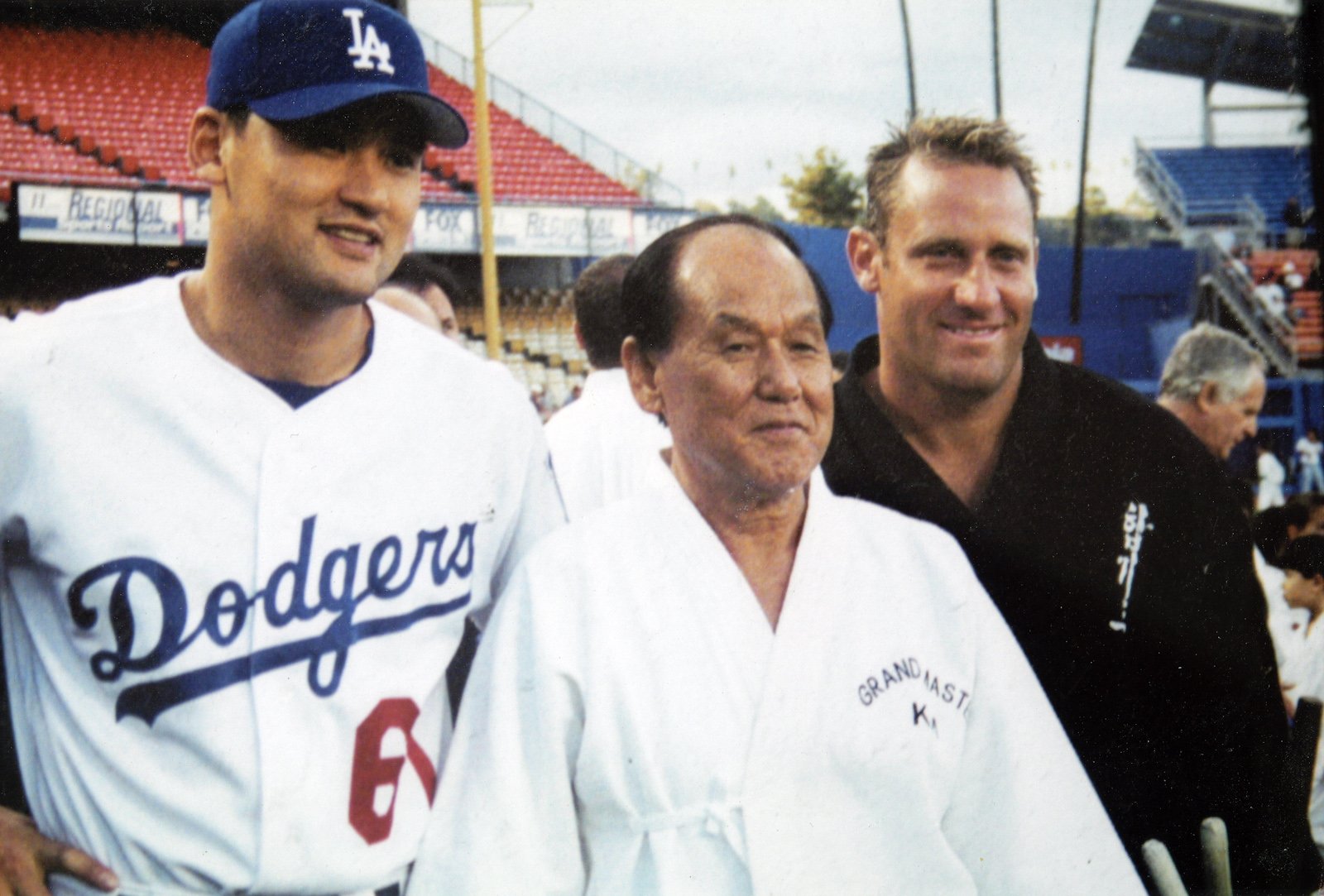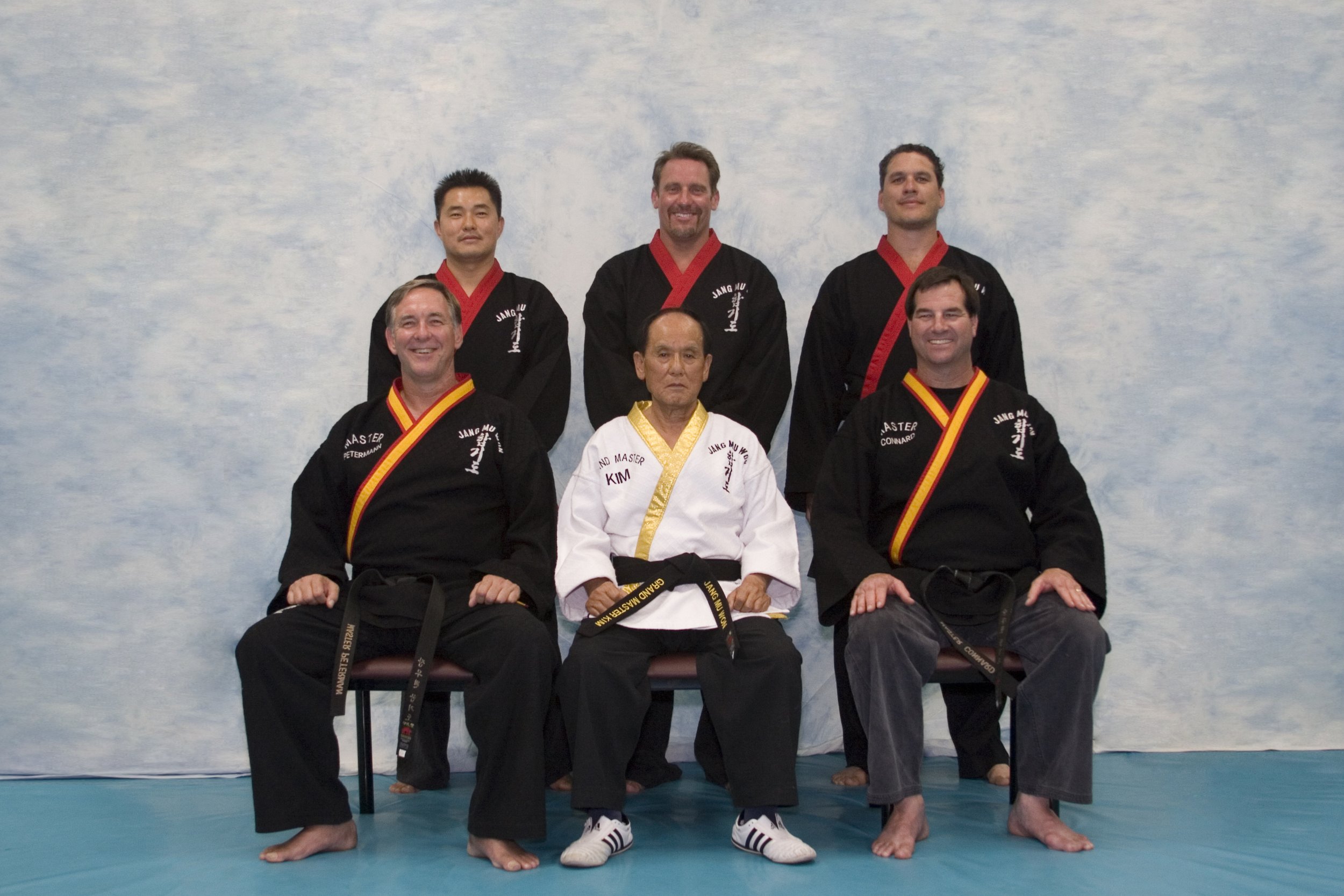Great GrandMaster Chong Sung Kim
The late Grandmaster Dr. Chong S. Kim is recognized as one of the world's great pioneers and foremost instructors of the Korean martial art of Hapkido. He was born in Seoul, South Korea and had practiced and taught Hapkido for nearly 60 years until his untimely death in 2009. He attained the highly coveted rank of 10th Degree Black Belt (Chong Jae Nim Founder) and was widely known and respected for his enthusiastic devotion to the art and his students. Grandmaster Kim emphasized the need for timing, precision, and fluidity in the execution of Hapkido techniques and spent his life striving to help the public and his loyal students grasp the essence of Hapkido both as a martial art and a way of life.
Grandmaster Kim began the years of study that lead to his eventual eminence in Hapkido when he was just a young boy. As a youth in Seoul, Korea, he attended Seoul Technical High School and also Hong Ig University where he graduated with a degree in Political Science. To supplement his extensive training in Hapkido, he also studied at Dong Ue Acupuncture School where he became proficient in acupuncture, bone setting, and joint manipulation. Early generations of his students can attest to his skill level in helping them through various illnesses and injuries with his knowledge.
In Seoul, the name Chong S. Kim became famous among the citizenry as the epitome of Hapkido. In 1960 Grandmaster Kim established the Jang Mu Kwan Organization through which he owned and operated a total of three schools, two of which were in the Yong San Ku District (the Sam Kag Ji branch and the Nam Young Dong branch) and another school in the Young Dong Po Ku District known as the Bong Chun Dong branch.
During this era, Grandmaster Kim was also an original member of a select group of twelve Hapkido masters who toured Asia during the Vietnam War giving martial art demonstrations and instructional lessons in Hong Kong, Taiwan, and South Vietnam. With an invitation and recommendation by the Korean CIA, the elite team he was a part of, stayed on in South Vietnam to provide specialized instruction in Hapkido strategy and techniques to members of the United States Green Berets and CIA personnel.
In 1973 he chose to bring his outstanding abilities to the U.S.A. where he ultimately owned and operated a branch in Alhambra and another in South Pasadena, California. It was in this area of Southern California that Grandmaster established the Jang Mu Won Association which was a natural outgrowth of his earlier Korea–based organization, the Jang Mu Kwan. In the rich layers of meaning in the Korean language, this symbolized the growth from what could be considered a "small house" to a "big house." This represented not only Grandmaster Kim's ever expanding and far reaching vision for the art of Hapkido, but also the limitless opportunities that existed in the United States to bring his art to a wider audience of eager martial artists. There are currently four additional branches of Jang Mu Won Hapkido located throughout Southern California for a grand total of six.
Grandmaster Kim enjoyed great success from 1973-2009 spreading the art, principles, and teachings of Hapkido, and to a certain extent, the culture and traditions of Korea and its people. His teachings were imbued with a powerful sense of morality and honor in how one should conduct his life and the debt of obligation and service that martial artists owe to society at large. In short, he taught his students how to incorporate Hapkido as a way of life, throughout their lives.
Grandmaster Kim enjoyed great success from 1973-2009 spreading the art, principles, and teachings of Hapkido, and to a certain extent, the culture and traditions of Korea and its people. His teachings were imbued with a powerful sense of morality and honor in how one should conduct his life and the debt of obligation and service that martial artists owe to society at large. In short, he taught his students how to incorporate Hapkido as a way of life, throughout their lives.
Grandmaster was honored by being selected to be "Instructor of the Year" by Black Belt Magazine in 2001.
Over several decades, Grandmaster Kim's comprehensive view to martial art instruction and its application to daily life eventually resulted in the establishment of Jang Mu Won Hapkido International, (www.jangmuwonhapkido.com) with his son, Grandmaster Han Woong Kim for the furtherance of the art on a global scale. In 2009, Great grandmaster Kim completed one of his lifelong dreams, by compiling traditional Hapkido techniques of the Jang Mu Won Hapkido Association on 20 educational DVD's.
Great grandmaster Kim's unquestionable impact on Hapkido will have a deep and lasting effect on untold thousands of lives in the future as significantly as it has had on thousands of lives up to this point in time.
Great grandmaster Chong Sung Kim's contribution to the evolution, refinement, and quest for perfection in the martial art of Hapkido has firmly established a legacy of excellence for future generations to not only follow, but to exceed! This is the way of martial arts and has been for milestone this generation and all future generations of Jang Mu Won Hapkido will not fail in this regard.
Jang Mu Won Hapkido Association History













































